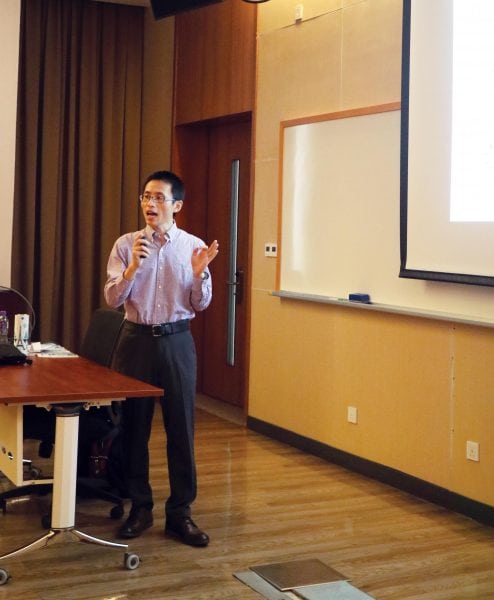| Talk title | DNA binding proteins in epigenetic regulation: decipher the function of different C2H2-ZFPs for Polycomb recruitment |
| Speaker | Prof. Dayong WANG Postdoctoral fellow National Institute of Child Development and Human Health National Institutes of Health |
| Date & Time | 26 September 2018 (Wednesday) 10:30-11:30 |
| Venue | Room G004, E12 Building (University of Macau) |
| Abstract | To fulfill accurate regulatory function, epigenetic marks need to be established precisely at the target regions. However, most epigenetic modifiers (writers and erasers) don’t have DNA binding specificity, thus they usually rely on DNA binding proteins for sequence-specific recruitment. C2H2 zinc finger proteins (C2H2-ZFPs) represent the largest family of transcription factors, with about 700 members in human. Many C2H2-ZFPs are known to mediate the recruitment of different epigenetic marks, including Polycomb group (PcG) proteins and associated H3K27me3 which act as repressors for homeotic genes and other key developmental genes. In this talk, I will discuss our recent study about how three PcG recruiters (Pho, Spps and Cg) – all belong to C2H2-ZFPs – work together for PcG recruitment. Genome-wide profiling of PcG binding, H3K27me3 and transcriptome showed that PcG binding is not limited to canonical Polycomb domains, and out of H3K27me3 domain, Pho and Spps bind distinct regions associated with differential Ph and Psc occupancy – indicating the existence of novel PRC1 variants. Disruption of Spps and Pho, but not Cg, causes the redistribution of H3K27me3 from canonical Polycomb domain to heterochromatin. Our results support different PcG recruiters can act both cooperatively and independently at specific PcG target genes, highlighting the complexity and diversity of PcG recruitment mechanisms.l arena. alidation of bioactive small molecules from natural products and clinical drugs. |


